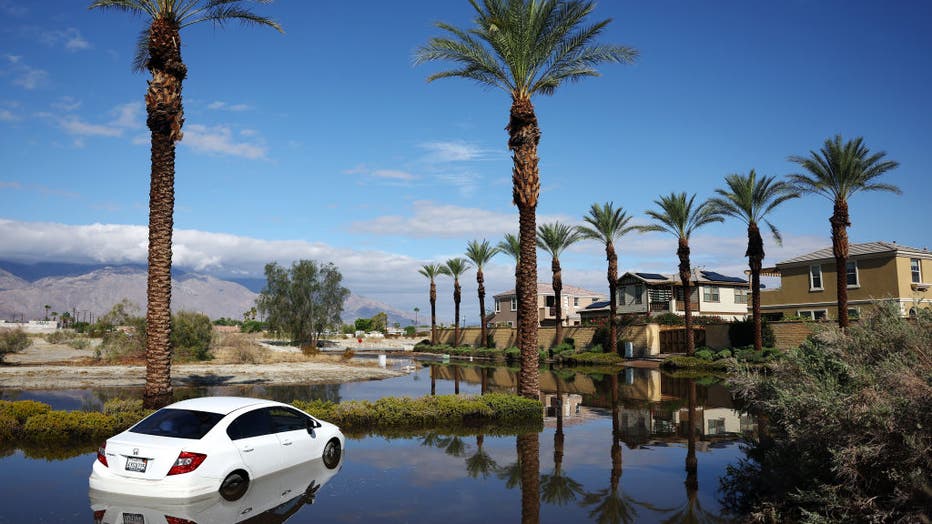Is Hilary a harbinger of climate change to come?
OAKLAND, Calif. - Tropical Storm Hilary was directly responsible for thousands of flight cancelations and delays across a wide swath of the southwest as well as all the flooding and wind damage seen in Southern California and Nevada.
Though it looked unusual for the West Coast, the storm looks to be a scientific harbinger of our collective future, according to climate experts.
Stranded travelers were able to complete their trips on Monday. Karen Fox and her husband finally got from Tucson to Oakland on the third try.
"We got a text message from the airline that they canceled our original flight which was supposed to leave yesterday. And then we were rebooked going through Vegas, from Tucson to Vegas with a layover and then onto Oakland and that got canceled and then we came, so we came out this morning." Fox said.

CATHEDRAL CITY, CALIFORNIA - AUGUST 21: A vehicle is partially submerged in floodwaters after Tropical Storm Hilary moved through the area on August 21, 2023 in Cathedral City, California. Much of Southern California and parts of Arizona and Nevada a (Getty Images)
It took Sarah Udor four tries, finally opting for an Oakland arrival instead of SFO.
"Three or four days before my flight with Southwest, I was getting notifications that the flight would be delayed, I would have issues. In fact, three of them. So I rerouted my flight to Oakland," said Udor.
Hilary was the first tropical storm to hit California in more than 80 years, but experts say they are likely to become more common.
"The trend is happening," said Dr. Brenda Ekwurzel, director of climate science with the Union of Concerned Scientists, a nonprofit science advocacy organization. "The trouble is, the oceans are warmer at higher latitudes and in many other places."
Colder Pacific waters off northern Mexico and southern California put the brakes on tropical storms moving into the southwest U.S.
"Now, the strength of the storm is making landfall in Baja, in fact, moving inland as a tropical storm. The Arctic region and part of Canada and northern Eurasia are warming several times faster than the global average. That is the region and latitude that is experiencing the most change," said Ekwurzel.
That makes forests dry out much quicker than before.
And, what moves north in this hemisphere, is moving south down under where it's the dead of winter. "We have record low Antarctic sea ice extent, the lowest on record. The whole globe is experiencing change," said Ekwurzel.
Unless humans get a handle on emissions now, the heating will continue profoundly affecting all life.

